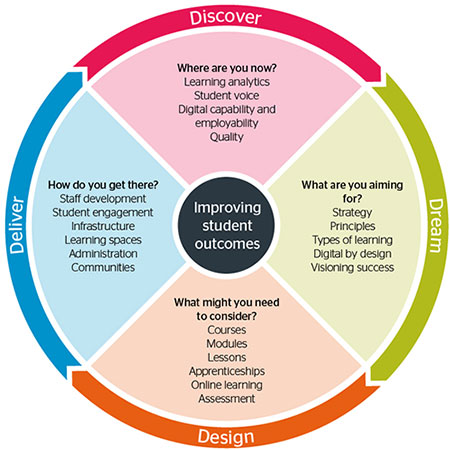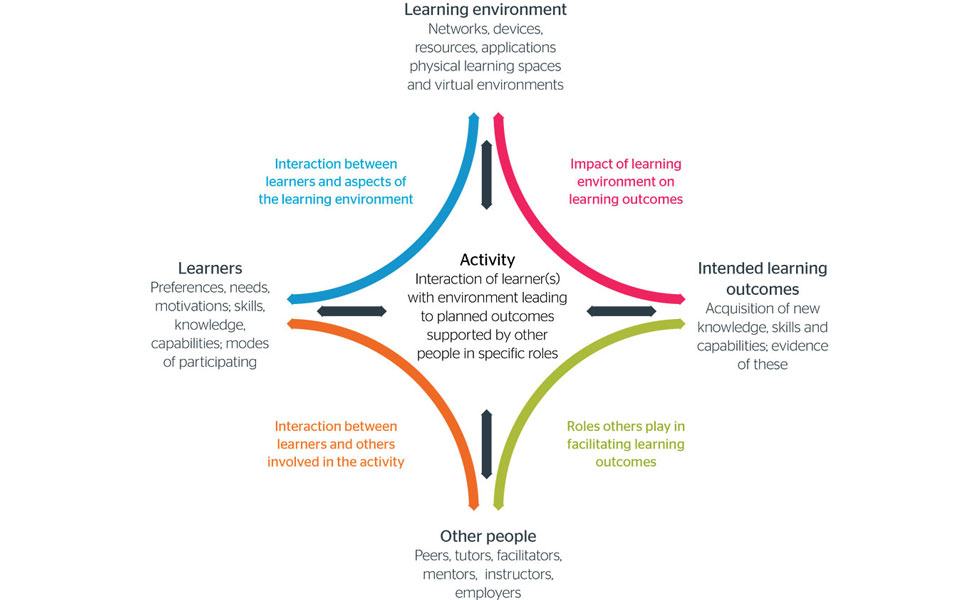JISC Learning Design Guide#
Designing learning and assessment in a digital age apparently published in 2018
Structure#

What is learning design?#
Creative involving an eco system. Activity at the focus, but interactions arising from the learner, learning environment, other people all hoping to contribute to (intended) learning outcomes
JISC learning design family tree

Modules#
Starts with discussion of some issues with modules (why good design is important)
Misc resources#
Minimal course site design#
-
Hartpury College Unit minimum specification
Failrly standard spec for a default course site. Fairly limited. Expects to be just used. No thought given to maintainence or reuse.
Design#
-
Similar to ABC (broadly). Blueprint and storyboard

-
Viewpoints - seen as pre-cursor to the card/storyboard approaches used by others, site includes numerous cards
Assessment#
- Queens University Assessment Principles cards
- Re-engineering Assessment Practices in Higher Education
Ten principles of good assessment and feedback practice
Good assessment and feedback practices should:
-
Help clarify what good performance is (goals, criteria, standards).
To what extent do students in your course have opportunities to engage actively with goals, criteria and standards, before, during and after an assessment task?
-
Encourage ‘time and effort’ on challenging learning tasks.
To what extent do your assessment tasks encourage regular study in and out of class and deep rather than surface learning?
-
Deliver high quality feedback information that helps learners self-correct.
What kind of teacher feedback do you provide – in what ways does it help students self-assess and self-correct?
-
Encourage positive motivational beliefs and self-esteem.
To what extent do your assessments and feedback processes activate your students’ motivation to learn and be successful?
-
Encourage interaction and dialogue around learning (peer and teacher-student).
What opportunities are there for feedback dialogue (peer and/or tutor-student) around assessment tasks in your course?
-
Facilitate the development of self-assessment and reflection in learning.
To what extent are there formal opportunities for reflection, self-assessment or peer assessment in your course?
-
Give learners choice in assessment – content and processes
To what extent do students have choice in the topics, methods, criteria, weighting and/or timing of learning and assessment tasks in your course?
-
Involve students in decision-making about assessment policy and practice.
To what extent are your students in your course kept informed or engaged in consultations regarding assessment decisions?
-
Support the development of learning communities
To what extent do your assessments and feedback processes help support the development of learning communities?
-
Help teachers adapt teaching to student needs
To what extent do your assessment and feedback processes help inform and shape your teaching?